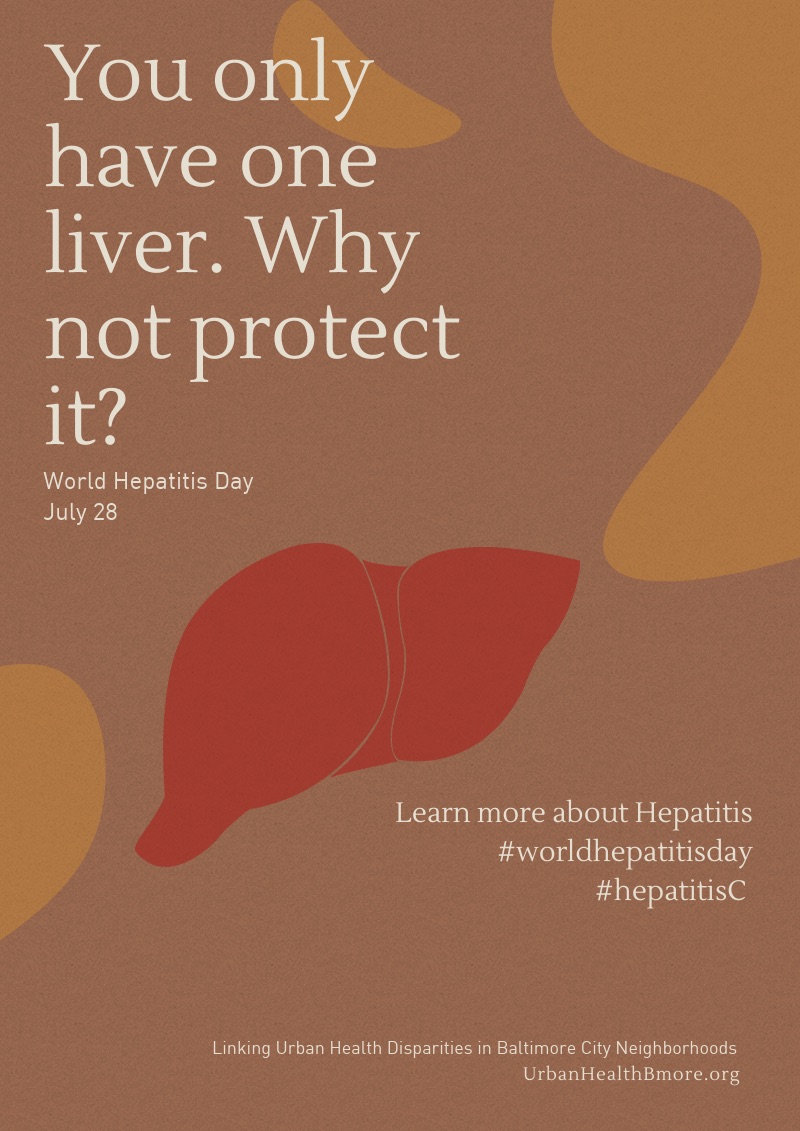Our 2019 activist in residence, Sakiera Malone, updates us on her summer project at the Quixote Center raising awareness about the Hepatitis C virus.

I first
learned about Hepatitis, more specifically the Hepatitis C virus (HCV), from a
client at a nonprofit organization that I had previously worked with in
Baltimore City. Hepatitis C is a virus that overtime, attacks the liver causing
severe damage and in some case death. This client didn’t look or act sick,
however, she relayed how cautious she was about her illness, ensuring that
anything as a small as a paper cut was properly taken care of due to the
transmission of the virus through blood.
Worldwide,
there are approximately 71 million people living with HCV. In the United
States, there are over 3 million people living with chronic HCV and many of them
are unaware that they have the virus. According to the U.S. Department for
Health and Human services, there are approximately 17,000 new cases in the
United States every year, however the number can be significantly higher. There
are two different forms of HCV including acute hepatitis and chronic hepatitis
C. Acute HCV occurs within the first several months of being infected with the
virus and can either be short-term or develop into chronic HCV. Between 75 to
85 percent of those with acute Hepatitis C will develop chronic HCV. Chronic
HCV can cause lifelong damage to the liver if left untreated.
There are
several different ways that someone can contract HCV. Currently, the main cause
of transmission from person-to-person is through injection drug use. According
to a study conducted by the Center on Disease Control and Substance Abuse and
Mental Services Administration (SAMHSA). From 2004 to 2014, an increase of HCV was
seen among Americans 18-39 years old. Among that demographic, there was a 400 percent
increase of acute hepatitis C; 817 percent increase in admissions for injection
of prescription opioids and 600 percent increase in admissions for heroin
injection.
Those who
develop chronic HCV face severe damage to their liver including fibrosis,
cirrhosis and liver cancer. Liver fibrosis is the early stage of liver damage
and occurs when a large amount of scar tissue forms on the liver when the liver
attempts to repair and replace damage cells. When liver damage form fibrosis
continues overtime, the damage can become permanent and the damage can affect
the liver’s internal function. Cirrhosis is the later stage of liver fibrosis. Chronic
HCV is the most common cause of liver damage in the United States.
According to HepVu, an interactive online resource
created by Emory University’s Coalition for Applied Modeling for Prevention
(CAMP) with support from the Centers for Disease Control and Prevention (CDC),
as of 2016, the rate of Hepatitis C is 890 per l00,000 people in the state of Maryland.
Between 2015 and 2016, 19 of the 24 Maryland jurisdictions experienced an
increase in reported HCV cases. In 2017, there were 7,922 new reported cases of
chronic HCV in the state of Maryland.
My project, “Linking Urban Health Disparities in Baltimore City Neighborhoods,” aims to investigate the impacts of the Hepatitis C on Baltimore City neighborhoods, specifically unveiling which communities are impacted at the higher rate. Based off of my research, I have met and developed a list of community organizations and religious institutions offering human and health services in those neighborhoods. These community organizations and religious institutions will be invited to an information session(s) in August 2019 where they will be provided with originally customized local data and outreach and training material reflecting the populations most affected in Baltimore City. Linking Urban Health Disparities in Baltimore City Neighborhoods will officially launch on Sunday, July 28th, World Hepatitis Day.
Please visit UrbanHealthBaltimore.org on the officially launch date to learn more.
